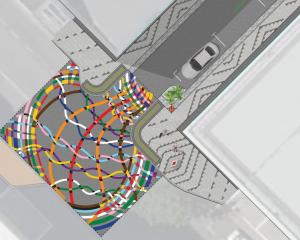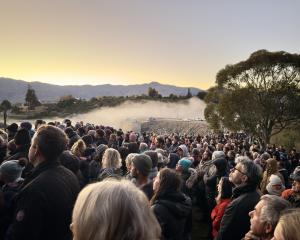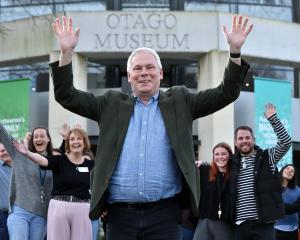Otago is a province with a rich history of establishing firsts. We have led the way in many fields and that tradition continues. Researchers at the University of Otago are attracting international attention, with some granted millions of dollars for cutting-edge projects. So what are they up to? Reporter John Gibb, in a fortnightly series, does his own research on the researchers.
More than 130 years ago, the sailing ship Dunedin, using new refrigeration technology, carried frozen meat from Port Chalmers to Britain for the first time.
That single voyage in February 1882 revolutionised New Zealand agriculture, establishing the export meat industry and greatly boosting the fortunes of Dunedin and Otago.
University of Otago physicist Associate Prof David Hutchinson is well aware of that achievement, and believes the city's economy will soon realise more ''amazing potential'' in a new era of powerful technologies developed through quantum physics.
Prof Hutchinson believes such new technologies, backed by cutting-edge Otago research and new Government Centre of Research Excellence (Core) funding, will add vibrancy to the region's economy.
High-technology companies will ultimately spin off from research, providing private sector jobs, he believes.
In turn, the jobs would counter the scientific brain drain, helping retain top homegrown researchers and attracting some of the ''best and brightest'' from elsewhere.
Prof Hutchinson is director of the Dodd-Walls Centre for Photonic and Quantum Technologies, a government-funded Core, to be headquartered at Otago University. Another government-funded centre, Brain Health Research New Zealand-Rangahau Roro Aotearoa, is also being established, co-hosted by Otago and Auckland universities.
Prof Hutchinson said gaining Otago University's first Core through the Dodd-Walls Centre and co-hosting the brain research Core amounted to a ''coup'', and would deliver strong benefits for Dunedin.
The Dodd-Walls Centre has been running for seven years, but in May this year gained greatly prized Core status, enabling it to expand operations. It had been ''anomalous'' that Otago, as the country's most research-intensive university, had been ''yet to host a Core'' despite the Government-funded Cores running since 2002, he said.
''We've promised a $150 million return on the $30 million Core investment in 10 years and at least 10 new [spin-off] companies,'' Prof Hutchinson said.
''The most important thing to me, though, is not the money but the development of career pathways for highly skilled individuals to stay in New Zealand.
''Photonics, and the manipulation of the quantum building blocks of light, and the precision control of matter at the atomic scale through the use of light, underpin advanced technological development in areas such as computing, advanced sensing technologies and medical imaging, and provide huge potential for future economic prosperity.''
A photon is a particle representing a quantum of light or other electromagnetic radiation, and photonics is the related science, including all technical applications of light.
Prof Hutchinson said about 30 permanent staff were already involved across the physics Core, mainly at Otago and Auckland, but also at Massey, Canterbury and Victoria universities. These collaborating academics generated about $8million a year in research income and the Core funding would add a further $5 million a year over six years.
The funding will not be spent on new bricks and mortar, but will initially boost the centre's Dunedin research group from about 20 to 25, a mix of full-time academic staff and other researchers, including postdoctoral scholars.
Researchers in the existing centre had built ''a huge international reputation'' as individuals.
But the Core status and funding now showed the world New Zealand really was ''a world player in the field of photonic and quantum science and technologies''. Only a small fraction of people with PhDs in physics became academics, highlighting the need for more ''appropriate, rewarding'' private sector jobs.
Hard work was being done within the Core to move research into development and through to either start-up companies or licensing.
Some projects aimed at commercial applications - including one using medical imaging - were under way. This was being run by Dr Jevon Longdell, used a combination of ultrasound and laser light, and was funded through a MBIE Smart Ideas contract. Another Otago physicist, Dr Mikkel Andersen, was working to develop a new gravitometer, in another MBIE-funded project.
English-born, Prof Hutchinson said he was ''chuffed'' to receive the vote of confidence from fellow researchers, in believing he was the right person to lead the centre.
Advertisement













